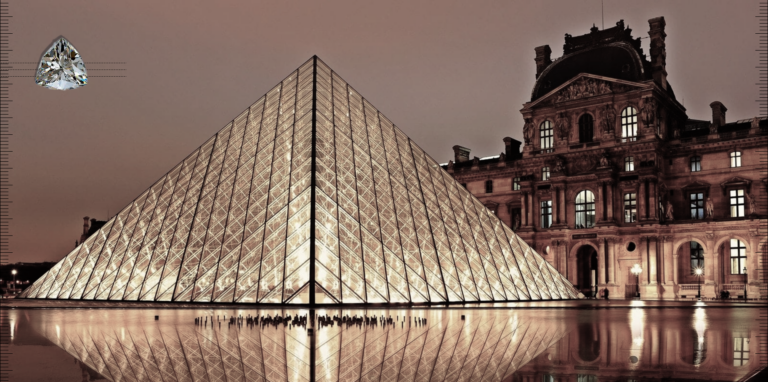
Historical Objects
Pomander:
Pomander is a small container for perfumes that have particular symbolism and are supposed to have healing effects and treat illnesses. It appeared in the Middle Ages around the 12th century. Initially, they were in different shapes; some could look like tangerine or an apple. It could be opened into quarters where you could put powder or perfumes. The possibility of putting perfumes in a pomander is seen as the first form of aromatherapy.
From the Renaissance period on, they became jewelled objects made out of gold or silver, most of the time set with gemstones. The large ones were hung from the waist or sometimes worn as a necklace, though they were quite heavy. They could also be attached to a ring or to the waist as a belt.
Chatelaine:
Chatelaine is a belt hook that can be worn on a waist. It had different chains coming out of it, and to the chains, you could attach household items, such as keys, scissors, and little watches that you would need during the day. The word “chatelaine” comes from the French word “Mistress of Castle” because she would be the one to own the keys to the castle. By the 16th century, it was decorated with gemstones and made out of gold. Later, chatelaine became sort of brooches; they were a perfect combination of clock-making and jewellery-making.
Carnet de bal (dance cards):
Carnet de bal are the little cards worn by any respectable lady who went to the ball during the 18th and 19th centuries. It was a crucial accessory on which a lady could write the name of the dancer with whom she would dance all of the respective dances of the night. It could take the form of a booklet, a fan or just dance cards. The fancy ones were made out of gemstones and gold. They could also be attached to the wrist of the lady.
Wax Seals to close letters:
Wax Seals were used to close letters and were like a guarantee. They were as important as the signature today and had to be present on every elegant desk. Seals were very precious; if you were wealthy, you had several of them for several places in your house. Every seal had the family’s emblem and the owner’s initials. It had to be strictly made for the owner and could not be passed on to anyone. The most sophisticated ones had the handle and the seal carved into hardstones and sometimes gemstones. As time passed by and they became less used, they became some fancy paperweights
Objects of Adornment
Hat Pins
Large hats were fashionable during the Belle Epoque time, and every elegant lady had to have one. The trend of wearing large hats led to the development of hat pins, which were used to hold the hair to the hat. Hat pins were incredibly fashionable during the Art Nouveau period. Many of them have been made by people like Rene Lalique or George Fouquet and have been decorated with moulded glass, opals, and enamel. The decorative element at the end of the pin had to match the hat. At that time, people also thought that hat pins could be used as protection if you were attacked.
Vanity Cases and Minaudières
Vanity cases and minaudieres were the norm during the 1920s and the 1930s.
Vanity cases were like refillable containers and were clearly demonstrating style and status at all time. They were usually made by a specialized workshop. The first step was to create the gold structure of the case. The second step was to apply different materials, like lacquer, enamel, and set them with gemstones or diamonds. The latter step was usually done in a jewellery house.
Regrettably, these vanity cases have fallen out of fashion in modern times. The evolution of cosmetics, with their different formulations and packaging, has rendered the refillable nature of these cases obsolete. Yet, their historical significance remains, offering a fascinating glimpse into a bygone era of elegance and style.
Minaudières
Before it was fashionable to wear leather handbags, the handbags were mainly made by jewellery houses (for example, an evening clutch). Those bags/clutches were originally jewel accessories; they became more casual (in leather) afterwards. The clutches could be made using the pearl fabric technique with seed pearls or natural pearls, but not cultured pearls, because at the end of the 19th century, there were no cultured pearls. In a way, some of the minaudières represented the best collaboration and the initial collaboration between fashion and jewellery
Objects for the Evening
Cigarette Case
Before WW1, it was pretty rare to see a woman with a cigarette case, but by the 20s, there was no more difference between men and women smoking; thus, it became socially acceptable for both genders to smoke. At first, the design for the case was a bit more dedicated to men, but with time, the cigarette cases became more and more elaborate and were decorated in a way that could suit both men and women. The same happened with the case lighters, cigar cutters or cigarette holders.
Champagne Whisk
Back in the day, people used to think that the problem with champagne was the bubbles, and they had to be removed before you drank. Ladies of the era found a solution for it: a gold retractable champagne whisk. Before drinking, a lady would stir the champagne with the whisk and eliminate the bubbles. It was a must-have accessory which every lady would carry with her to an occasion.




